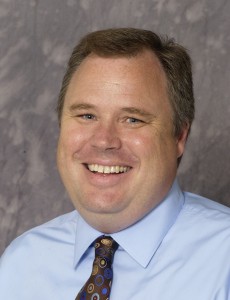
director of the Tulare County Workforce Investment Board.
Last year was a good year for the national job market, maybe not the great year that some people needed, but a good one. The U.S. economy added 2.2 million jobs. Cautious optimism reigned for most of the year.
Then the final monthly employment numbers for 2013 were released.
The national economy added only 74,000 jobs in December, a little more than one-third of what was expected. Economists were more than a little surprised. Investors were more than a little nervous.
When the U.S. Bureau of Labor Statistics released its December numbers, one person who remained calm, possibly even pleased, was Adam Peck, executive director of the Tulare County Workforce Investment Board.
“We are heading in the right direction with the lowest unemployment in six years,” said Peck. “That’s a positive thing.”
He noted that the unemployment numbers at the end of 2013 were down 2-1/2% (to 13.4%) in the county, compared with the numbers at the end of 2012 (15.9%). “That’s one of the bigger drops we’ve ever seen.
“Every month since September 2011, the unemployment rate has been lower than the same month the year before,” he said. “That’s a run of 27 straight months.”
Peck acknowledged that there are still a lot of people in Tulare County looking for work, “but we’re not in a recession. If you look at things like sales tax, you will see it’s at an all-time high.
“What people are concerned with is that the number of jobs being created isn’t enough to provide the growth that the economy needs,” Peck explained. “It wasn’t that we were losing jobs; it was that the expectations for the size of job growth were higher than what we saw in December.”
Many in Tulare County wouldn’t know that the recession was over if they didn’t read it in the newspaper.
“The problem is that Tulare County has always had high unemployment,” said Peck. “In Tulare County, we’re going to have to deliver jobs at a rate that other places don’t have to.
“The city of Visalia has an unemployment rate that is lower than the state as a whole,” he said. “It shows how tough things are in the agricultural areas.”
People who have stopped looking for work are a contributing factor in lowering national unemployment numbers.
“People talk about people dropping out of the labor force, but here it’s a change in the flow of immigration,” said Peck. “You have labor coming in and out of the area that plays into it.”
The reduced size of the Tulare County labor force is a major contributing factor in local unemployment numbers.
“Sometimes you drive down the unemployment rate by adding jobs, sometimes by decreasing the size of the labor force itself,” said Peck, who noted that in Tulare County, the workforce population decreased by 4,300 from December 2010 to December 2013 (206,100 to 201,800), while the number of people employed here increased by 5,600 (169,100 to 174,700) during the same period.
Peck considers annual numbers more reliable than monthly numbers.
“The annual numbers take some of the noise out,” he said, explaining that focusing on numbers from a single month is, “like watching a film one frame at a time.”
He added that in the county, monthly agricultural employment numbers can fluctuate from one year to the next, depending on when crops hit.
The Tulare County Workforce Investment Board gathers information and uses it to help increase employment in the county, through information, education and training.
“We’re trying to ensure that people understand the skills that are valued in the local economy,” said Peck, adding that information about employment needs is gathered from local businesses. This kind of information recently resulted in the creation of a physical therapy assistant program at College of the Sequoias, and training in the new computer skills needed in manufacturing.
“We also work with employers directly because often they can’t find the exact right person for a position,” he added. “We offer on-the-job training for a percentage of the employees.”
